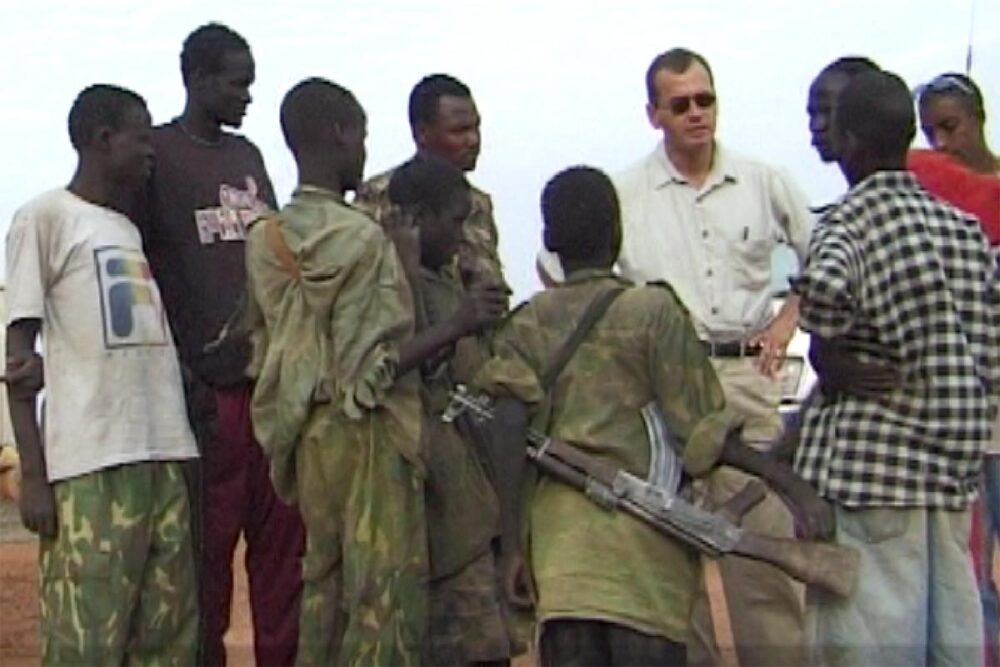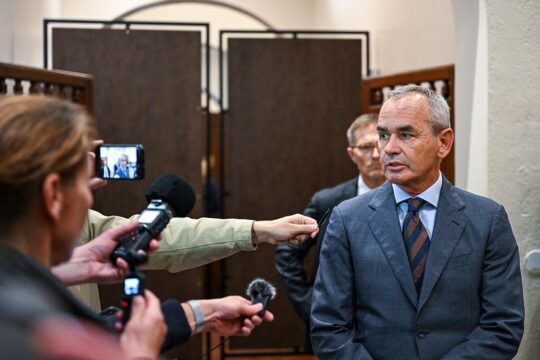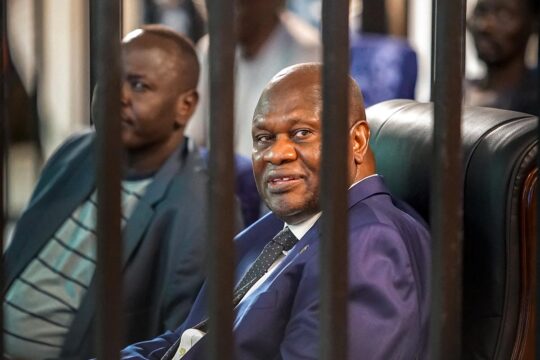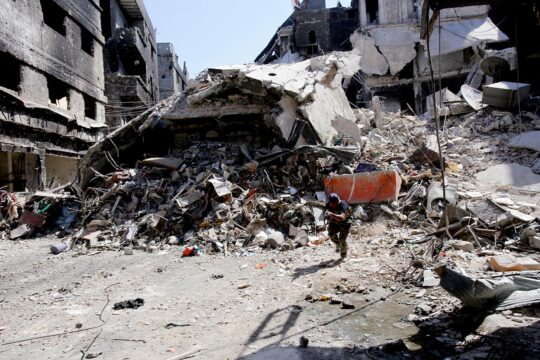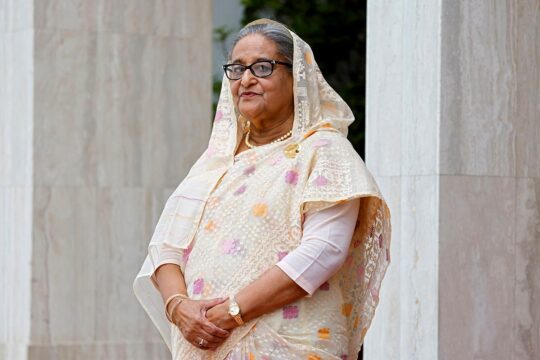March 2001. Speeding away from Lundin’s base camp in Rubkona, the Toyota Land Cruiser heads into the disputed Jikany area. In the driver’s seat seats security chief Richard Ramsey, freshly shaven, wearing a plaid shirt, both hands gripping the wheel. Beside him, a young Ian Lundin, convinced that his investments can help develop the country’s natural resources and lift Sudan out of poverty.
In the backseat, Swedish freelance journalist Bengt Nilsson is filming. Nilsson has been invited to show that road construction and oil extraction are not a “road of death” while, in the spring of 2001, negative news about the company dominates the media.
The raw footage has been shown to the court on several occasions by both the prosecutor and the defence team.
UN special rapporteurs and human rights organisations such as Christian Aid have published testimonies about the situation in Sudan and how oil companies have worsened conditions for the civilian population - leading to headlines and public debate.
“We are beaten up by the press”
In a fax dated March 29, 2001, discovered during a house search at the Lundin Oil Company headquarter in Geneva in January 2018, the then chairman Ian Lundin wrote to an acquaintance: “We are really being beaten up by the press, but in the end, who cares? They are a bunch of ignorant buggers.”
That spring, the internal solution to what the CEO of the company Magnus Nordin called “media hysteria” in an email sent to Lundin, was to invite journalists to cover the story on the ground.
Freelance journalist Nilsson has recounted in interviews that he hesitated for only a second before accepting the invitation, and now he sat in the backseat of Lundin's car with his camera.
The terrain on either side of the newly built road is empty of people, except for a convoy vehicle equipped with a heavy machine gun mounted on the back.
A handwritten note with orange text is taped to the windshield, reminding passengers that seat belts must “always” be worn. Another note on the window indicates that the car belongs to H.S.E. (for “Health, Security and Environment”), Lundin’s security firm consisting of former military officers who had transitioned from the British Army’s special forces to the oil company’s boardroom.
Everything is going according to plan, and the recorded footage will later be broadcast on Sweden’s most prominent news programs to highlight development and stability in the region.
But, two decades later, there is one problem. When, in the film, Lundin states that they are entering the Jikany area, Ramsey responds: “This is the place where there was a lot of fighting when the local Nuer group SSIM tried to expel the army”, adding that “everything started when the road construction began”, as he gestures with his hand to indicate how the now-completed road cuts a straight line through the empty bushland.
Lundin’s cross-examination
Now in January 2025, Lundin sits in courtroom 34 in Stockholm, accused of complicity in war crimes committed in Sudan between 1997 and 2003, and the prosecutor cross-examines the defendant. His goal is to demonstrate that human rights violations occurred in block 5A, that Lundin was aware of them but that, despite this knowledge, he chose to continue operating in the war-torn country. Large portions of the prosecution’s case exposed during the autumn are quoted again before the court, with the difference that now Lundin is asked to comment on various reports.
One of the key documents is the “Scorched Earth” report, from the NGO Christian Aid, which, upon its release, highlighted attacks on villages in block 5A in May 2000 – when a consortium led by Lundin Oil was operating there –, including the village of Kwoch. The report estimated that 11,000 people had been displaced.
Dressed in a dark suit like the other men in the courtroom, Lundin says that the report came as a shock and that he immediately took action to verify the allegations that the military and government-aligned militias were killing and displacing people to create conditions for the company to set up in an area controlled by rebels.
When prosecutor Henrik Attorps presents the film clip of Lundin and Ramsey driving, he asks:
- You were there to investigate what might have happened during the road construction, and Ramsey said that there was fighting here. Did you consider that these conflicts might be related to what Christian Aid reported?
- I don’t recall this specific conversation. What I remember is that there had been factional and tribal conflicts the previous year and government intervened to stop them.
- In the footage I’m referring to, Ramsey explicitly said that ‘everything started when the road was to be built’, and he described how SSIM attacked a truck as the road construction began.
- I don’t remember that, but I do remember that there was a conflict at the time road construction started, said Lundin, emphasising that the purpose of the trip was to determine whether there was any truth to allegations of forced displacement and village clearances along the road. But, he insists, there was no indication of such actions. No evidence at all.
“It was a very complex situation”
- Did you then ask any questions about these ‘factional conflicts’ that Richard Ramsey talked about?
- Everywhere there are conflicts that affect civilians, people will be displaced, but what I tried to understand was the cause behind them, and it was a very complex situation. For us, there would be no logic or reasoning behind attacking civilians in any way. We were there as a constructive party to make a positive difference, answered Lundin.
One of the counts of aiding and abetting concerns Lundin signing a “Security and Road Agreement” with the Sudanese government. According to the agreement, the company would fund and construct an all-weather road between Rubkona and Thar Jath, in an area not controlled by the Sudanese military or regime-allied militias. Offensive military actions were therefore a prerequisite for the planned operations, suggest the prosecutor.
Lundin says he was not part of any discussions about the road and that local management handled those talks. According to him, the area was more of a lawless region than a rebel-controlled one. “It was an area with a lot of harassment and theft”, claims Lundin. And when prosecutor Attorps presents internal security reports showing that the military planned to station 100 soldiers around Thar Yath, Lundin says that it was about “providing adequate protection”.
The outcome of the journey along the road was not evidence of conflicts but rather proof of the opposite, he claims. Lundin recalled that he was able to show the visiting journalist markets with fresh goods and villages with electricity in the government-controlled areas. Also, a soldier interviewed by Nilsson stated there was no “scorched earth tactic” and that they were there to protect the oil company.
Upon reaching the rig at Thar Yath, Lundin described an increase in the number of people living there. He remembers the area as green, and it also seemed that a market had emerged at the site. “I saw that there was peace, I saw militias and people walking along the road. For me, it was a clear sign that the local population did not oppose our presence.”
Child soldiers
In the original film, which is part of the evidence and to which Justice Info has had access, one can see the Land Cruiser in front, kicking up dust, and small groups of soldiers stationed every five kilometres along the road. But the film also contains other details that the prosecutor argues strengthen the indictment.
“Here come our allies,” one can hear Ramsey saying when the car stops and is suddenly surrounded by child soldiers. The automatic rifles hang loosely over their shoulders and appear disproportionately large against their small bodies. The children are barefoot and around ten years old.
Footage from block 5A in today’s South Sudan is rare. From the courtroom’s speakers mounted on a dark wooden panel, the voice of filmmaker and journalist Nilsson is be heard, asking Lundin what he thought about “child soldiers guarding the oil fields.” He replies that it is a “generalization to claim that they are guarding the oil fields” and points out that he himself has children.
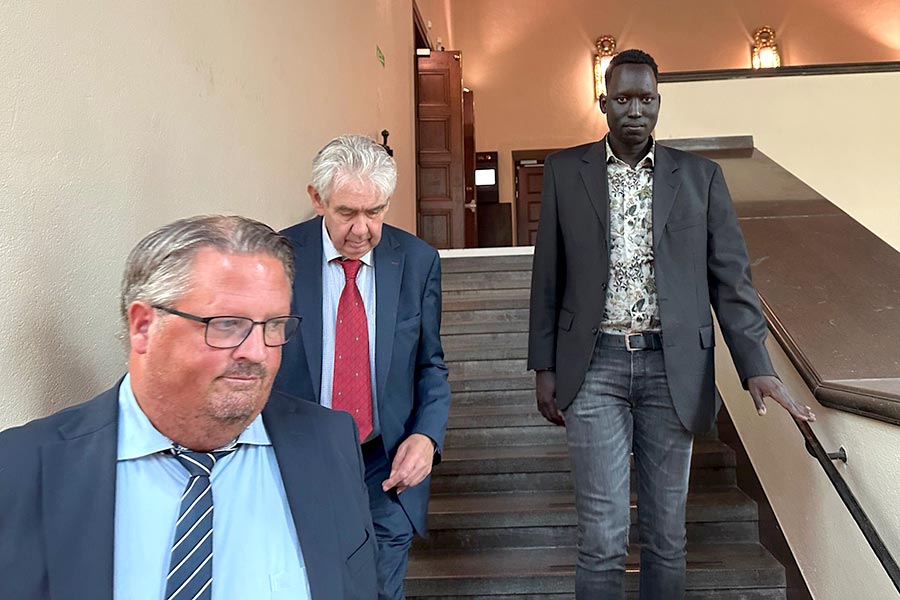
“I saw my mother die”
In August 2024, 23 years after the footage, one of the children, who could be glimpsed in profile in the film, sat in Stockholm in front of Lundin, and testified against the company he had once protected.
Gatkuoth Liah Diu recounted that, at the time, he would go and watch the workers as they approached the village. The men with surveying instruments were fascinating to follow, and he remembered how they placed red flags on the ground. From a distance, he and his friends could see the excavators, but they were not allowed to go near them, and kept their distance. “When they left the area, we would go up and pick up the flags and play with them,” he recalled.
He said that it had been peaceful when the workers first appeared, but problems began shortly after. “It was in the morning, I was helping my mother milk the cows,” Liah Diu recalled. What he saw did not resemble other helicopters. This one was armed. He ran to his mother, who stopped milking the cows. The weapons on the helicopter’s wings made the huts explode and burn.”
His voice caught. He remembered that his mother was heavy and that she lay over him to protect him. “I saw my mother die. She died instantly. Everything around was burning.” He remembered his mother’s last embrace and that he was soaked in blood.
He believed he was about ten years old when the attack happened. It was not raining, so he assumed it was during the dry season.
The plaintiff recounted how his father, a then ‘general’ in the SSIM rebellion, comforted him and told him not to worry. Now, he would take care of him. “I went with my father, and I became a soldier,” he said as naturally as if it were his ten-year-old self sitting on the chair.
The explanation for why his father and himself were guarding the road that day in March 2001 was that SSIM was, at that time, on the Sudanese government’s side after a “peace agreement”.
He remembered patrolling with his friends, searching for food, when he spotted a man with a camera and a car, and became curious. “I remember seeing a cameraman, but I am surprised that I appear in the video clips. I did not understand that at the time.”
He described the place where he met Lundin and Nilsson as “an oil site” near Thar Yath, though not at the actual drilling tower. The reason he was there? “My father said we were to protect the oil facilities in the area. There was oil at the site.”
Both the journalist Nilsson and Ramsey will be heard in court as witnesses in 2025.
Martin Schibbye is a Swedish Freelance journalist and founder of the news website Blankspot.


